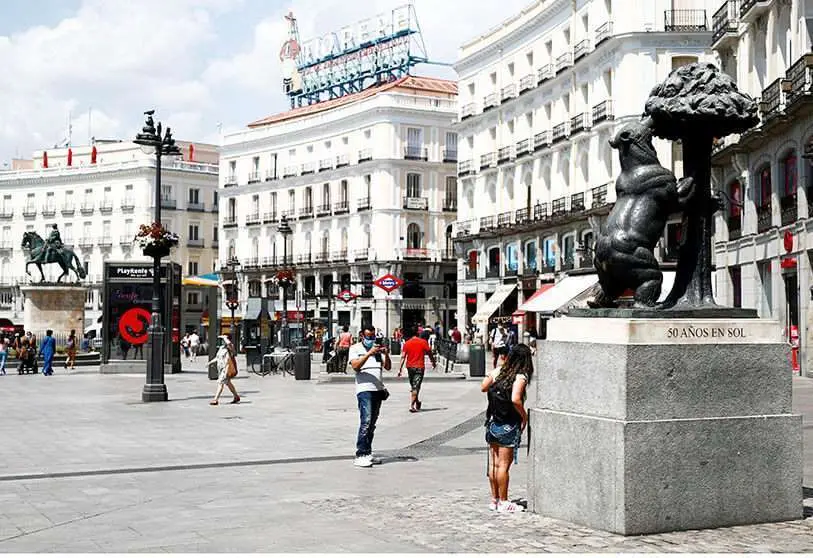A landscape in words

In this atypical summer, we suggest our readers stop to observe some different, eminently urban, linguistic landscapes. This is the name given to "the words visible in public spaces".
In Spain, linguistic landscapes are the reflection of diverse situations: we can find monolingual environments, where Spanish (with the sporadic presence of other languages such as English) occupies all the space. Likewise, in territories where there are two official languages, the linguistic landscape combines Spanish with the corresponding co-official language. Finally, we also find bilingual or multilingual linguistic landscapes, in which Spanish (or one of the co-official languages next to it) is mixed with languages of immigration (such as Arabic or Chinese), or with geographical varieties of American Spanish, mixtures brought about by very special contact situations (such as those that occur in certain neighbourhoods of large Spanish cities).
Linguistic landscapes of this third type are precisely those that interest the migration scholar, insofar as they constitute an indication of the presence in cities of communities that have emigrated to them, which, by showing their language in the streets of the neighbourhoods where they settle, demonstrate the desire to make their collective identity visible.
In order to account for the complexity of these hybrid populations, sociologists have coined the concept of "superdiversity", by which they mean the areas in which a multiplicity of small communities of different origins and migratory status live together. This concept becomes a reality in neighbourhoods such as Lavapiés, in the city centre, or in the "nucleus of local identity" known as NoLo (an acronym for Nord di Loreto) in the city of Milan.
The linguistic messages composing these very special landscapes are of different natures: institutional (e.g. rules and notices to citizens, written in the languages of the host communities), commercial (commercial signs, posters) or informal (graffiti, small informal and passing messages, such as those on streetlights and poles). All of them usually have an informative function, whether they come from the top down (in the case of messages addressed by the town halls to the neighbours), or from the bottom up (such as those issued by shops, private citizens, etc.). They can be addressed to all citizens in general or to specific social groups.
In addition to this informative function, the messages also have a symbolic value: the simple mixing of linguistic messages in different languages reveals the socio-cultural complexity of the urban areas of the cities in which they appear; likewise, messages in a given language can evoke the vitality of the community that makes use of it.
The linguistic landscape changes over time: if the city of Madrid could be considered a predominantly monolingual area until the 1980s, from the end of the 20th century and the first years of the 21st it became a multilingual space, in which Spanish coexists (i.e. appears written in public spaces) with varieties of Spanish from other latitudes and at the same time with languages of very diverse origin (such as Arabic, Chinese, Bengali, etc.). Researchers Mónica Castillo and Daniel M. Sáez were the first to document this linguistic diversification of the city, parallel to the diversification of its human landscape. Based on photographic samples taken at different times between 2009 and 2010 in different areas of the city (the shopping area in the centre; neighbourhoods with a high demographic concentration of immigrants - such as Usera or Tetuan; important transport centres - such as Atocha station or the airport, etc.), they noted the presence of 35 languages in different contexts and combinations.
Every era has its landscape, and it seems clear that the global cities of the beginning of the 21st century can be characterized, among others, by these linguistic landscapes that allow us to know the socio-cultural diversity of their inhabitants, their dynamism and the vitality of the communities they form.
Luis Guerra Salas, Professor of Spanish Language at the European University of Madrid, is one of the main researchers of the INMIGRA3-CM project, financed by the Community of Madrid and the European Social Fund.

